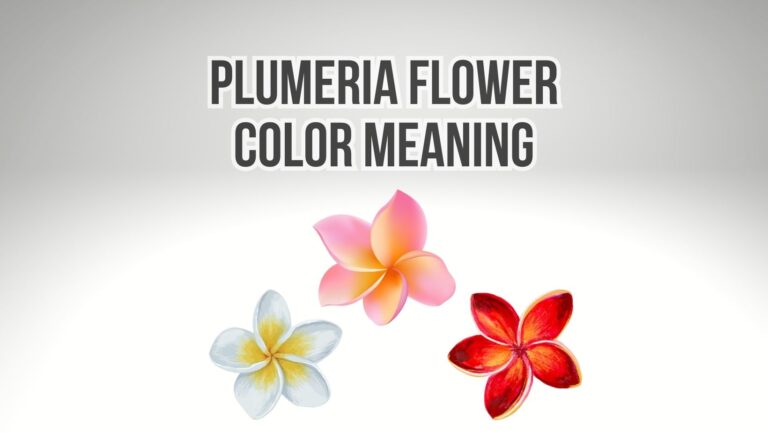
Plumeria rust fungus, scientifically known as Coleosporium plumeriae, is a common fungal disease that affects plumeria trees (Frangipani). It primarily manifests as rusty orange or yellowish-brown powdery spots or pustules on the undersides of the leaves. Over time, these spots can spread to the upper leaf surfaces and cause defoliation and tree weakening.
Plumeria rust fungus is spread through wind-borne spores and can be particularly prevalent in areas with high humidity and frequent rainfall. The fungus thrives in warm and moist conditions, making it more common in tropical and subtropical regions.
Plumeria Rust Fungus Treatment and Prevention
Treating Plumeria Rust Fungus requires a combination of cultural practices and fungicidal treatments.
Here are some effective methods to manage and control the disease:
- Pruning and Sanitation: Begin by pruning and removing any infected leaves, stems, or flowers from the affected plumeria plant. This helps to reduce the fungal load and prevent the spread of spores. Ensure proper disposal of the infected plant material to prevent reinfection.
- Improved Air Circulation: Create a more favorable environment for your plumeria plants by improving air circulation. Prune neighboring plants or foliage that may obstruct airflow around the plumeria. This helps to reduce humidity levels and prevent prolonged leaf wetness, which promotes the growth of the rust fungus.
- Water Management: Avoid overhead watering and try to water the plumeria plants at the base. This prevents the leaves from staying wet for extended periods, reducing the conditions suitable for fungal growth. Watering in the morning allows the leaves to dry out during the day, further minimizing the risk of infection.
- Fungicidal Treatments: Apply fungicides specifically labeled for controlling rust fungus on plumeria plants. Fungicides containing active ingredients such as copper, chlorothalonil, or myclobutanil are commonly recommended. Follow the instructions on the label regarding application rates and frequency. It’s important to start applying fungicides at the first sign of infection and continue as directed to effectively control the disease.
- Preventative Measures: Regularly inspect your plumeria plants for any signs of rust fungus or other diseases. By catching the infection early, you can prevent its spread to other plants. Additionally, maintaining overall plant health through proper nutrition and avoiding stress factors can make the plumeria plants more resistant to diseases, including rust fungus.
In addition to plumeria rust fungus, there are a few other types of fungal diseases that can affect plumeria plants. Here are a couple of common ones:
Black Tip Fungus (Phoma spp.):
Black Tip Fungus, caused by various species of Phoma fungi, appears as black or dark brown lesions on the tips of plumeria branches, leaves, and flowers. The affected areas may become necrotic and die off. Cool, wet conditions often favor black Tip Fungus and can spread rapidly in humid environments.
Treatment: Prune and remove infected plant parts, sanitizing pruning tools between cuts to prevent further spread. Apply a fungicide labeled for control of black tip fungus, following the instructions on the product. Improving air circulation and avoiding overhead watering can help prevent the disease.
Stem Rot (Fusarium spp. and other pathogens):
Stem Rot is a fungal disease that affects the stems of plumeria plants, causing dark lesions, rotting, and wilting. The disease is often introduced through wounds or cuts on the plant and thrives in moist conditions. Fusarium spp. and other pathogens are commonly associated with Stem Rot.
Treatment: Remove and destroy severely infected plants to prevent the spread of the disease. Cut out and dispose of the infected portions for less severe cases, ensuring to sterilize tools between cuts. Improve drainage to prevent excessive soil moisture. Fungicidal treatments may be necessary, so consult local experts for appropriate fungicides.
It’s important to note that prevention plays a crucial role in managing fungal diseases on plumeria plants. Maintaining proper plant hygiene, avoiding overhead watering, providing good air circulation, and ensuring well-draining soil can help reduce the risk of fungal infections.
Regularly inspecting your plumeria plants for any signs of disease and promptly treating any infections are key steps in keeping them healthy and vibrant. Suppose you notice any unusual symptoms or are uncertain about the specific fungus affecting your plumeria. In that case, consulting with local gardening experts or a plant specialist can provide tailored advice and recommendations for your specific region.
Summary
It’s important to note that controlling plumeria rust fungus can be a challenging and ongoing process. Depending on the severity of the infection, repeated applications of fungicides may be necessary. It’s also advisable to consult with local gardening experts or plant specialists for specific recommendations tailored to your region and plumeria cultivars.
By implementing these preventive measures and promptly treating plumeria rust fungus, you can help preserve the health and beauty of your plumeria plants. Regular monitoring and proper care will go a long way in preventing and managing this fungal disease.






